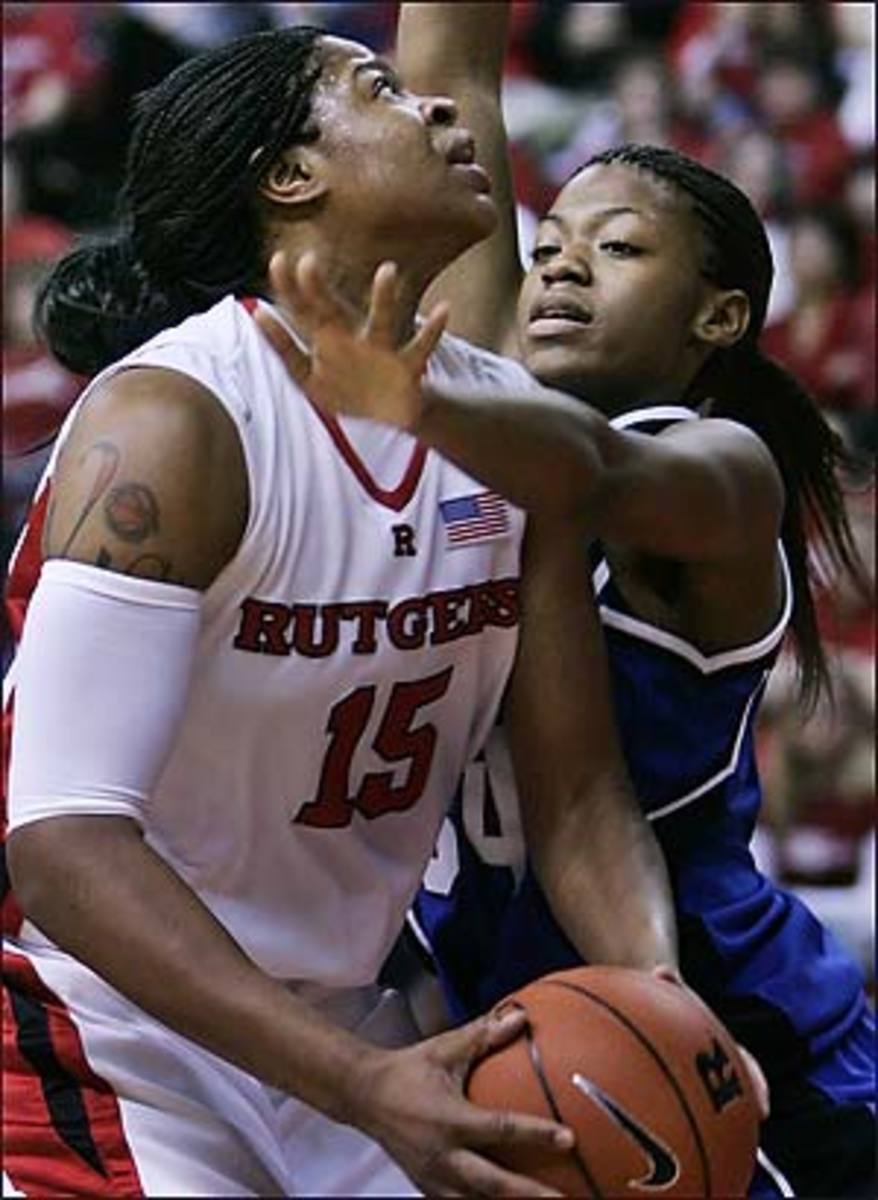What we're missing


They've won 10 straight games and are fifth in the nation with a 15-2 record. They play basketball with a fluid grace and are coached by someone considered a "legend." And yet I'll wager you have no idea what I'm writing about.
They are the Rutgers Scarlet Knights women's basketball team, coached by C.Vivian Stringer. Last spring, when Don Imus called the Rutgers team "nappy headed hoes", after their title-game loss to Tennessee, there was a national uproar. As a cause celebre, the Scarlet Knights were the belles of the ball. But as a team, they are the daughters of Ralph Ellison: invisible, executing their play among shadows.
Even casual sports fans should be paying attention to the Scarlet Knights. They have returned with remarkable focus following the media circus and even death threats that accompanied the harsh spotlight of last spring. Compare the absence of attention they have received to Virginia Tech's football squad, which was lionized for having a strong season in the aftermath of last spring's campus massacre (please, I am not comparing the massacre at Virginia Tech with Imus. I'm only saying that it gave their year an extra varnish of attention.) The anonymity of the Scarlet Knights' season speaks to a crisis in women's basketball, and it's vexingly tenuous place in the sports world.
This should not be the case. Unlike the stock market, the trends for women's hoops have been pointing skyward for years. Title IX has created a talent pool where more young girls play at an ever-earlier age, with instruction -- and competition -- that gets more serious by the year.
In 2003, the NCAA released a study by Richard M. Campbell, the organization's assistant director of statistics that said, "There seems to be no stopping the meteoric rise of women's basketball in general and NCAA women's college basketball in particular as the 2003 NCAA teams have raced to another banner year in attendance. The 1,009 NCAA women's teams in three divisions surpassed the 10-million mark for the first time in history as Division I teams led the 19th consecutive year of record growth for women's basketball."
The conventional wisdom in much of the mainstream press was that the women's game was posed to challenge the popularity and appeal of the men's game on many campuses. The men's game was ailing as high school players like LeBron James and Dwight Howard were going straight to the pros, forgoing a mess of teams with poor fundamentals.
The nadir was in 2006 when the two best players in the college game were Adam Morrison and J.J. Redick. The women's game in contrast was starting to feel like it had some stars: Diana Taurasi, Alana Beard, and a dunking freshman named Candace Parker. This trend seemed to carry even greater weight in 2004, when ESPN broadcast the most watched game in its history as UConn beat Tennessee in front of a raucous sell-out crowd.
And yet in 2008, only a diehard fan would dare say women's college basketball is a major player in sports. The spotlight on the game feels remarkably dim.
The number one reason, most logically, is the dramatic reassertion of the men's college game with NBA draft rules ending the high school-to-pros dynamic. While it seems unfair, as Spencer Haywood has said, that an 18-year-old can fight in a war, but can't play in the NBA, it has saved the college game. There is a buzz now every fall, as fans wait to see whether the latest prep phenom has the goods. This year, Michael Beasley, O.J. Mayo, Derrick Rose and Eric Gordon have all commanded media attention long before the madness of March.
But the resurrection of the men, doesn't sufficiently answer why the women's game lacks heat. The answer lies in the coverage, and the priorities of the sports media. Despite the exponential rise in players and participants, the sports media is still stubbornly male. While Imus at least took time to denigrate the Rutgers women, most sports radio folks barely mentioned their Cinderella ascent to the Final Four. In other words, silence, not derision, is the number one obstacle women's sports face. The maddening part about it is that women's hoop nation has proven that it has an audience and a viable market. It shouldn't take a "Don Imus moment" to introduce the country to Vivian Stringer. A great team -- and a great story -- should be enough.
